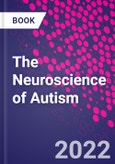The Neuroscience of Autism provides a comprehensive accounting of autism spectrum disorders by integrating scientific findings from behavioral, cognitive and neurobiological research. The book begins by defining autism, identifying characteristics and prevalence, exploring its history, and then moving on to the cognitive and social bases of behavioral symptoms, the brain bases of behavioral and cognitive symptoms, and finally, intervention practices. It examines theoretical models such as weak central coherence, enhanced perceptual functioning, and the extreme male brain hypothesis.
Finally, the book addresses the increased attention on the brain connectivity model of autism, looking at the synchronization of brain activity across different brain areas, the causal influence of a brain region on another, and white matter cable connections in the brain.
Please Note: This is an On Demand product, delivery may take up to 11 working days after payment has been received.
Table of Contents
1. History of Autism 2. Definition, Prevalence, and Behavioral Symptoms of Autism 3. Early Identification and Diagnosis of Autism 4. Social, Cognitive, Perceptual, and�Other�Models of Autism 5. The Neuroanatomy of Autism 6. Brain Function and Brain Connectivity in Autism 7. White Matter Microstructure in Autism 8. Animal Models of Autism 9. Genetic Etiologies of Autism: Unpacking Pathogenic Mechanisms and Characteristics 10. Cellular and Molecular Neurobiology of Autism Spectrum Disorder
11. Overview of Autism Interventions








